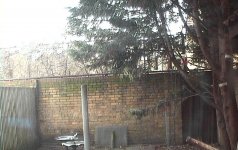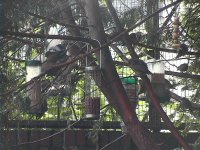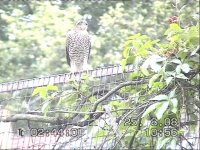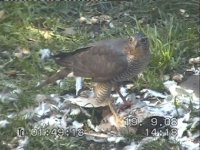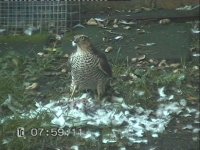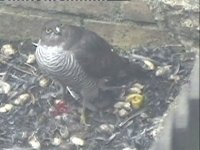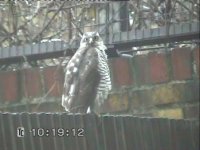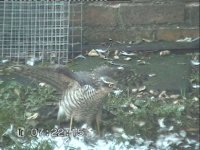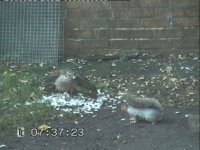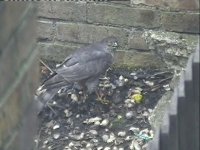ChrisKten
It's true, I quite like Pigeons
I've posted my experiences of Sparrowhawks, and pictures, in other threads here; but I wanted to post here what I may have discovered.
Because of the amount of potential prey (70+birds) in my garden, and the amount of time I observe each day (6 hours +), I see Sparrowhawk attacks frequently. During the last 2 years I have seen more than 10 successful kills and videoed the feeding a few times. I have also witnessed many more unsuccessful attacks. I should also say that my feeders and bird baths are not set up to give any advantage to the predators; there is plenty of cover for the prey to retreat into.
I was trying to work out how the Sparrowhawks attacked, where they hide, how they manage to hide in the first place, etc. Well I may have worked out some of this:
The male Sparrowhawk seems to hide in a tree at least 100 metres from my garden. He makes his run at speed across the top of the garden fences, ending up near the feeders in one of my trees. He crashes into the prey, often killing it on the strike. He usually takes Sparrows, the occasional Starling, Dunnock, Great Tit.
The female Sparrowhawk was a little more difficult to work out, but I think I know what her favoured method is. She flies into one of the trees; the tree, and my garden is filled with birds. But she doesn't fly at great speed, it appears she wants to be seen. She spooks every bird, and they fly as far away as they can. Then she waits in the tree, and in time, sometimes more than an hour, the birds return. Then when the time is right she strikes, taking either a Collard Dove or a Starling, which are nearly always eaten alive.
Now I'm just a garden birdwatcher, so I might have this all wrong. So what do you think? Does this sound like plausible Sparrowhawk behaviour?
Because of the amount of potential prey (70+birds) in my garden, and the amount of time I observe each day (6 hours +), I see Sparrowhawk attacks frequently. During the last 2 years I have seen more than 10 successful kills and videoed the feeding a few times. I have also witnessed many more unsuccessful attacks. I should also say that my feeders and bird baths are not set up to give any advantage to the predators; there is plenty of cover for the prey to retreat into.
I was trying to work out how the Sparrowhawks attacked, where they hide, how they manage to hide in the first place, etc. Well I may have worked out some of this:
The male Sparrowhawk seems to hide in a tree at least 100 metres from my garden. He makes his run at speed across the top of the garden fences, ending up near the feeders in one of my trees. He crashes into the prey, often killing it on the strike. He usually takes Sparrows, the occasional Starling, Dunnock, Great Tit.
The female Sparrowhawk was a little more difficult to work out, but I think I know what her favoured method is. She flies into one of the trees; the tree, and my garden is filled with birds. But she doesn't fly at great speed, it appears she wants to be seen. She spooks every bird, and they fly as far away as they can. Then she waits in the tree, and in time, sometimes more than an hour, the birds return. Then when the time is right she strikes, taking either a Collard Dove or a Starling, which are nearly always eaten alive.
Now I'm just a garden birdwatcher, so I might have this all wrong. So what do you think? Does this sound like plausible Sparrowhawk behaviour?





